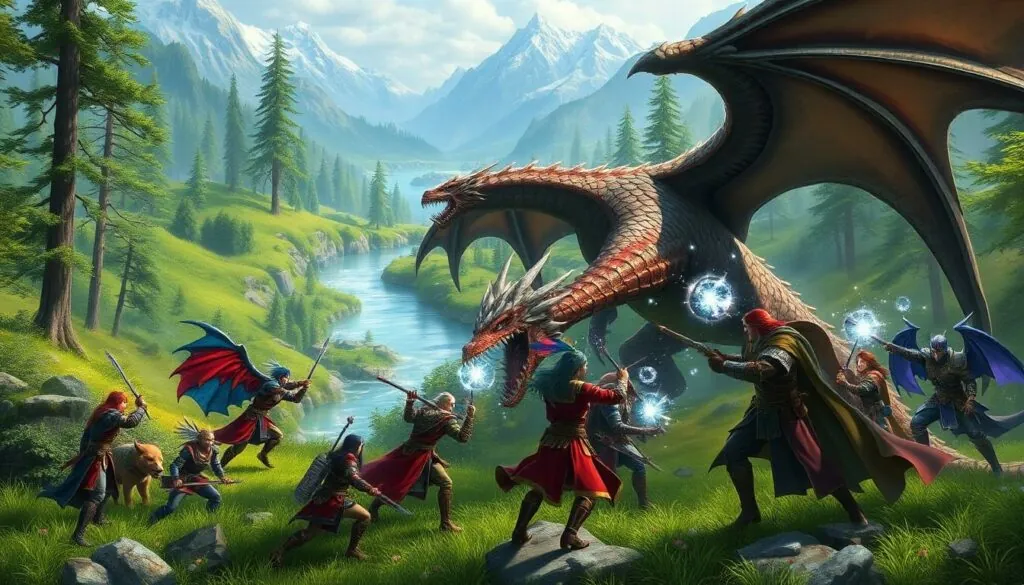In the wild world of Rust, survival isn’t just about gathering resources or building a fortress; it’s a thrilling race against time and other players. With every passing moment, the tension rises as players vie for dominance, crafting their own tales of triumph and disaster. But how many can join the chaos at once? Enter the realm of concurrent players, where the excitement multiplies like rabbits in spring.
Table of Contents
ToggleOverview of Rust
Rust attracts players with its engaging survival mechanics and competitive environment. As participants navigate challenges, the game emphasizes the importance of strategy and teamwork.
The Game’s Popularity
Rust gained a substantial player base since its release in early access in December 2013. Over 10 million copies sold showcase its widespread appeal. The game generates excitement through regular updates and patches, enhancing the overall experience. Community-driven servers offer unique gameplay options, further enriching its attractiveness. Social media buzz and streaming platforms amplify visibility, creating a vibrant community.
Unique Features of Rust
Rust stands out due to its hardcore survival elements. Players must manage health, hunger, and thirst while crafting tools and building shelters. Environmental threats, including wildlife and weather conditions, add layers of complexity. Base building allows for creative expression, enabling players to design unique structures. PvP combat is central, encouraging player interaction and competition. Additionally, the game features a despawn system for unmanaged items, increasing the stakes for resource management.
Understanding Concurrent Players
Concurrent players refer to individuals playing a game simultaneously on the same server. In Rust, this number significantly impacts gameplay dynamics and player interaction.
Definition of Concurrent Players
Concurrent players represent the total number of individuals actively engaged in a game session at any given moment. They share a virtual space and interact within the game environment. For Rust, this interaction involves survival strategies, resource competition, and forming alliances. Developers monitor concurrent player counts to analyze server performance and player engagement. Higher counts often lead to more intense competition, which can elevate the gaming experience.
Importance of Player Count in Online Games
Player count plays a crucial role in shaping the online gaming experience. Large communities often foster vibrant interactions and diverse strategies, enriching gameplay. In Rust, increased concurrent players intensify competition for resources, creating higher stakes for survival. Additionally, many players thrive in active environments, as they experience a sense of realism and urgency. A healthy player count can also enhance matchmaking capabilities, ensuring players encounter opponents of comparable skill. Having an engaging social environment is vital, as community-driven content evolves through player interactions.
Rust Concurrent Players Statistics
Rust’s concurrent player statistics reveal significant trends that enhance its gameplay dynamics and community interaction.
Historical Player Count Trends
Initially launched in December 2013, Rust began with modest player numbers. Rapid growth followed, particularly after the 2018 release of substantial updates. The player base surged past 10 million copies sold, reflecting increasing engagement. In 2020, the game consistently recorded peaks above 100,000 concurrent players. Seasonal events and regular content updates contributed to sustained interest. Player engagement escalated, especially during Steam sales, highlighting trends that indicate growing popularity and community investment.
Current Statistics and Records
As of 2023, Rust averages around 200,000 concurrent players on peak days, showcasing its robust player activity. Recent records indicate some days surpassing 300,000 players, particularly during high-profile updates or events. Many servers experience queues as players compete for limited slots, emphasizing the game’s popularity and demand. Furthermore, consistent player engagement drives extensive user-generated content, bolstering the game’s ecosystem. High player counts influence gameplay, as intense competition thrives in densely populated environments, amplifying the overall Rust experience.
Factors Affecting Concurrent Player Count
Several elements contribute to the player count in Rust, impacting the overall gaming experience. Game updates and community engagement play prominent roles in attracting players.
Game Updates and Expansions
Significant game updates and expansions directly influence concurrent player numbers. Major updates introduce fresh content, such as new features, gameplay mechanics, and quality-of-life improvements. For instance, the 2018 updates sparked a surge in player activity, leading to peaks exceeding 100,000 concurrent players. Maintaining a regular stream of updates keeps players invested and encourages them to return. Developers focus on community feedback to shape future content, ensuring that the game evolves in line with player expectations. Expansions often coincide with promotional events, further boosting engagement and player count.
Community Engagement and Events
Community engagement fosters a vibrant player base. Special events, such as seasonal activities and community challenges, create excitement among players. High-profile tournaments can gather thousands of participants, elevating concurrent player counts. Players often share experiences and strategies through forums and social media, enhancing community interaction. The collaborative environment encourages teamwork and competition, amplifying the game’s appeal. Additionally, server-hosted events often draw large crowds, increasing the number of concurrent players active at any given time. Strong community involvement ensures that the game remains a dynamic and engaging experience for all players.
Comparison with Other Online Games
Rust stands out in the survival game genre, offering a unique blend of competitiveness and environmental challenges that set it apart from games like DayZ or Ark: Survival Evolved. Its emphasis on PvP determines how players approach survival. Gathering resources while avoiding enemy encounters heightens the game’s intensity.
Survival mechanics in Rust demand strategic thinking and teamwork, similar to other titles but with distinctive hardcore elements. Players interact more dynamically, especially as concurrent player counts increase. Engaging with a larger community fosters diverse strategies and richer experiences.
Rust vs. Other Survival Games
Rust differentiates itself from other survival games through its intense focus on player interactions. Players must not only survive but also dominate other players, ramping up the thrill. Titles like Minecraft prioritize creativity and exploration, while Rust emphasizes resource competition and direct confrontations. Player skill plays a significant role in determining the outcome of encounters, further enhancing the competitiveness.
Additionally, Rust’s combat mechanics create a high-stakes environment where each decision matters more than in many other survival games. Players find that successful survival relies on cunning tactics, making it a standout among its peers.
Insights from Player Count Statistics
Player count statistics provide valuable insight into Rust’s thriving community. Peaks over 300,000 concurrent players highlight its popularity during major updates and events. These surges contribute to vibrant in-game dynamics, encouraging creativity and collaboration among players.
Data shows an average of 200,000 concurrent players on peak days as of 2023. Such numbers ensure exciting gameplay and intense competition for resources and territory. Engaging with a large player base transforms experiences, fueling ongoing interest and participation while fostering ongoing user-generated content. These factors continually enhance the social environment within Rust.
Conclusion
Rust’s competitive landscape thrives on the dynamic interactions among its concurrent players. The surge in player counts not only amplifies the intensity of gameplay but also fosters a rich community that continuously evolves. With each update and event, the game draws in more participants, enhancing the overall experience and encouraging diverse strategies.
As players navigate the challenges of survival and competition, the sense of urgency and realism intensifies. This unique blend of cooperation and conflict sets Rust apart from other survival games, making it a standout choice for those seeking a thrilling multiplayer experience. The ongoing engagement and excitement ensure that Rust remains a vital part of the gaming community.








